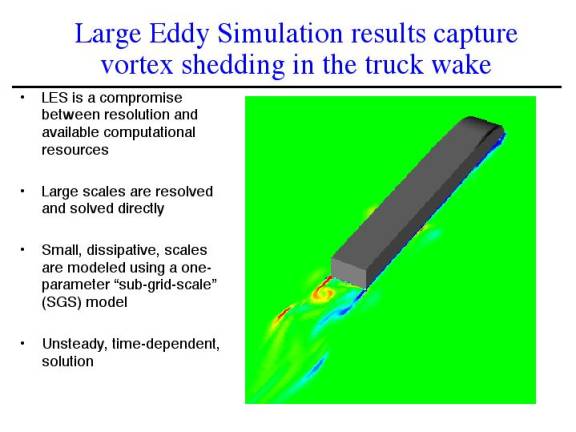Computer Model Results
lModel Turbulence by Reynolds averaged unsteady Navier-Stokes modeling (compressible)
- Large Eddy Simulation
Computer models are used because they can quickly create accurate, precise and comprehensive calculations for many model parameters. This web project is not intended to present new research but to offer the reader an understanding of what research is currently being done in the field. See below for preliminary results for an unsteady Reynolds-Averaged Navier Stokes simulation. (Bib. #2)

As you can see in this model the simulated unsteady air flow creates a rippling effect all across the major sources of drag that we previously identified. Notice the front radiator, tractor trailer gap and the trailer rear areas.
The eddy model also verifies the major drag areas discussed previously as seen below. (Bib. #3)

You can see the areas of recirculation behind the trailer. These computer models are invaluable to research in the area because of the accuracy, complexity of Physics involved and the shear number of variables to study. All of the preceding Physics has already lead to a 25% (Bib. #4) reduction in drag!